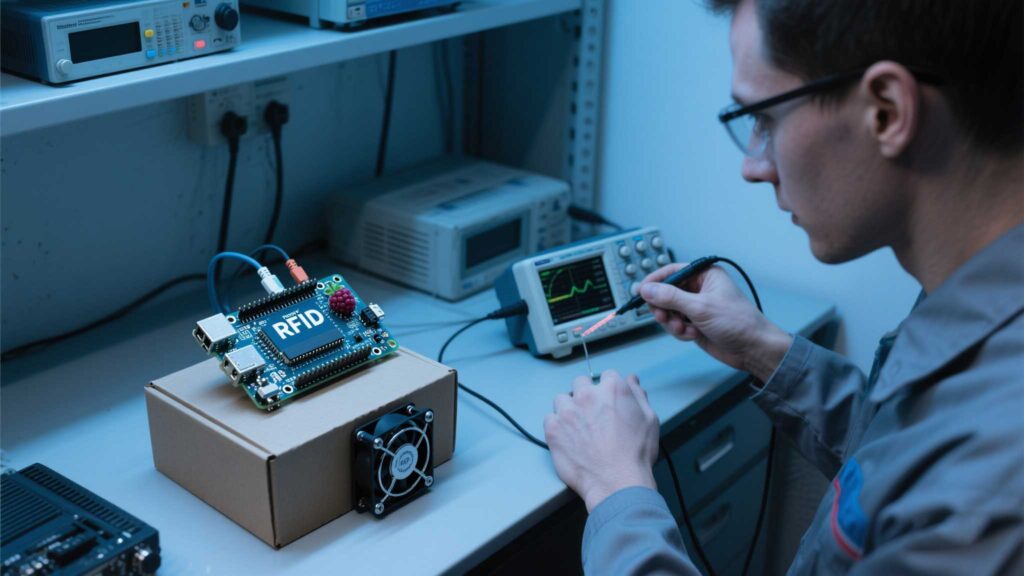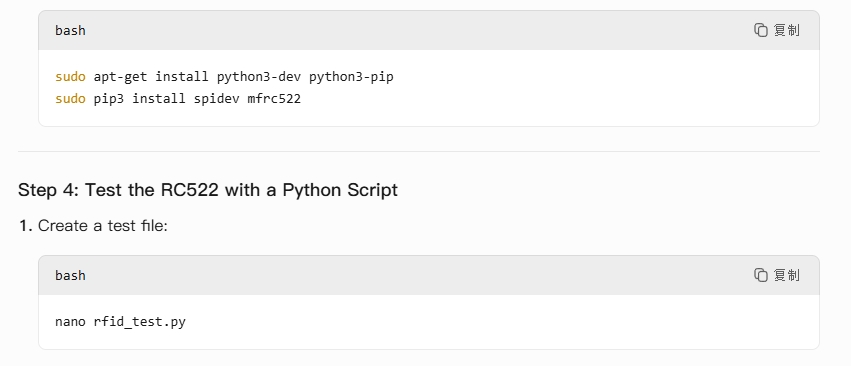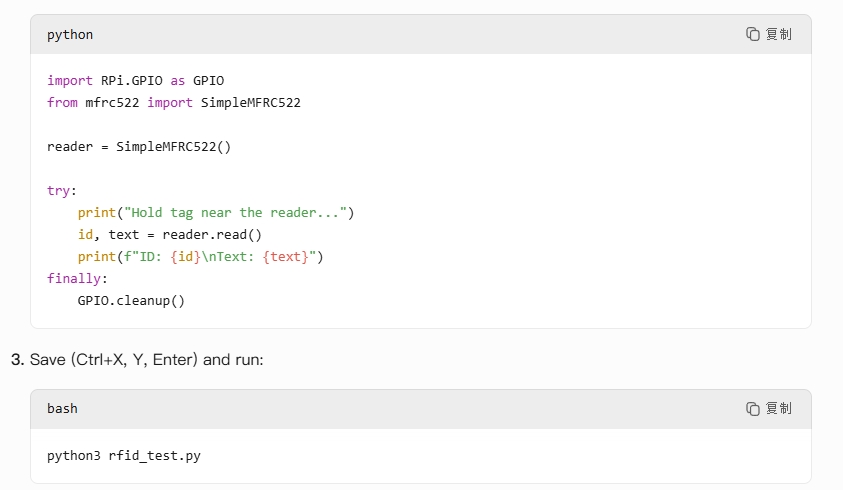What Are the Top Industries Benefiting from RFID Reader Technology?
362Which industries benefit most from RFID reader technology? Explore healthcare, retail, logistics, and more—plus how Cykeo drives efficiency and accuracy.
MoreAll RFID Product
he RC522 RFID module is a favorite among Raspberry Pi hobbyists—it’s affordable, easy to use, and perfect for projects like keyless entry systems or inventory trackers. But wiring and coding it can trip up first-timers. Follow this foolproof guide to get your RFID system up and running in under 30 minutes.

The RC522 uses SPI communication. Connect the pins as follows:
| RC522 Pin | Raspberry Pi Pin |
|---|---|
| SDA (SS) | GPIO 8 (Pin 24) |
| SCK | GPIO 11 (Pin 23) |
| MOSI | GPIO 10 (Pin 19) |
| MISO | GPIO 9 (Pin 21) |
| GND | GND (Pin 6) |
| RST | GPIO 25 (Pin 22) |
| 3.3V | 3.3V (Pin 1) |
Pro Tip: Double-check connections—mixing up MOSI and MISO is a common mistake!
bash
sudo raspi-config
bash
sudo reboot
bash
sudo apt update && sudo apt upgrade -y 2.Install Python libraries:

2.Paste this code:

4.Hold an RFID tag near the RC522. If successful, the tag’s ID and data will display.

Now that it works, tweak the script for your needs:
Example: Cykeo’s warehouse team used a similar setup to log tools checked out by employees, cutting loss rates by 30%.
sudo python3 instead of python3 for permission fixes.Takeaway: The RC522 and Raspberry Pi are a match made for DIY magic. Whether you’re building a coffee machine that activates with RFID stickers or a library book tracker, this combo delivers. Just follow the steps, test often, and remember: even pros mix up wires sometimes.
Which industries benefit most from RFID reader technology? Explore healthcare, retail, logistics, and more—plus how Cykeo drives efficiency and accuracy.
MoreDiscover how to select the best RFID handheld reader for warehouse inventory management. Learn Cykeo’s expert tips on durability, range, and software integration.
MoreLearn how RFID tags are reshaping industrial applications — from warehouse tracking to quality control. Practical insights, challenges, and lessons from real-world use cases.
MoreDiscover how weatherproof RFID antennas enhance outdoor asset tracking accuracy in harsh conditions. Learn about durability, performance, and cost-saving benefits for industries like construction and logistics.
More